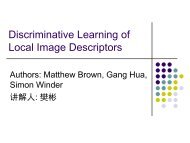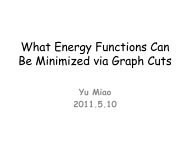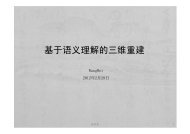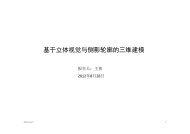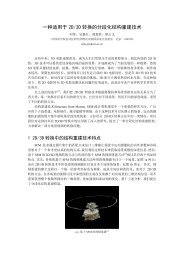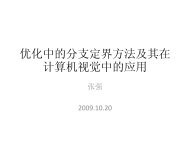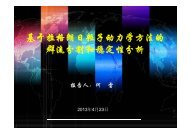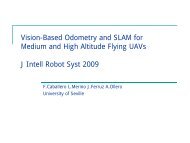Rotationally Invariant Descriptors using Intensity Order ... - IEEE Xplore
Rotationally Invariant Descriptors using Intensity Order ... - IEEE Xplore
Rotationally Invariant Descriptors using Intensity Order ... - IEEE Xplore
You also want an ePaper? Increase the reach of your titles
YUMPU automatically turns print PDFs into web optimized ePapers that Google loves.
This article has been accepted for publication in a future issue of this journal, but has not been fully edited. Content may change prior to final publication.<br />
<strong>IEEE</strong> TRANSACTION ON PATTERN ANALYSIS AND MACHINE INTELLIGENCE 3<br />
(a) By SIFT descriptor (b) By our proposed descriptor (MROGH)<br />
Fig. 1. Matching results of corresponding points which have large orientation estimation errors (≥ 20 o ) by (a) SIFT and<br />
(b) our proposed descriptor. The corresponding points that are matched by their descriptors are marked with red lines while<br />
yellow lines indicate those corresponding points that are un-matchable by their descriptors. Most of these corresponding points<br />
can be correctly matched by our proposed descriptor (MROGH), but few of them can be correctly matched by SIFT.<br />
an estimated reference orientation of the interest region, such as [6], [14]–[16]. The former<br />
achieves rotation invariance at the expense of degrading discriminative ability since this kind<br />
of descriptor usually loses some important spatial information, while the latter suffers from the<br />
potential instability of orientation estimation.<br />
This paper proposes a novel method for descriptor construction. By <strong>using</strong> gradient-based<br />
and intensity-based local features, two local image descriptors are obtained, MROGH (Multi-<br />
Support Region <strong>Order</strong>-Based Gradient Histogram) and MRRID (Multi-Support Region Rotation<br />
and <strong>Intensity</strong> Monotonic <strong>Invariant</strong> Descriptor). They are rotation invariant without relying on<br />
a reference orientation and still have high discriminative ability. Therefore, they possess the<br />
advantages of the existing two kinds of descriptors, but effectively avoid their disadvantages.<br />
Our main contributions include:<br />
• A comprehensive reliability analysis of orientation estimation is reported in Section III.<br />
We found that the orientation estimation error is one of the major sources of the false<br />
negatives (the true corresponding points that are not matched by their descriptors). Since<br />
our proposed descriptors calculate local features without resorting to a reference orientation,<br />
they are more reliable than those descriptors which rely on a reference orientation for<br />
rotation invariance.<br />
• The rotation invariant local features are pooled together based on their intensity orders.<br />
Since such a pooling scheme is rotation invariant, the constructed descriptors are rotation<br />
November 26, 2011 DRAFT


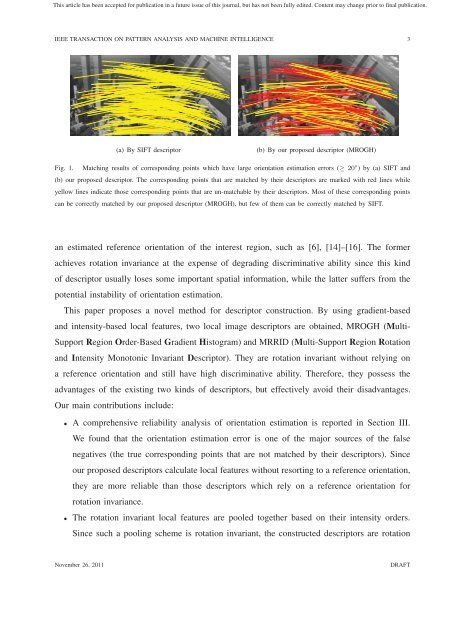
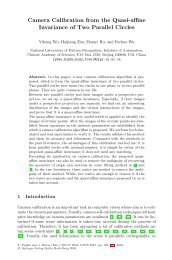
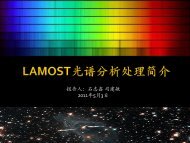
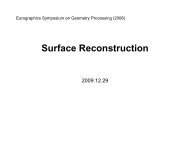
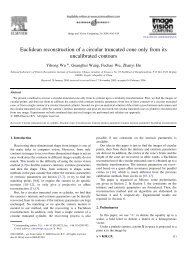
![Accurate, Dense, and Robust Multi-View Stereopsis (PMVS) [1,2,3]](https://img.yumpu.com/19388840/1/190x135/accurate-dense-and-robust-multi-view-stereopsis-pmvs-123.jpg?quality=85)
